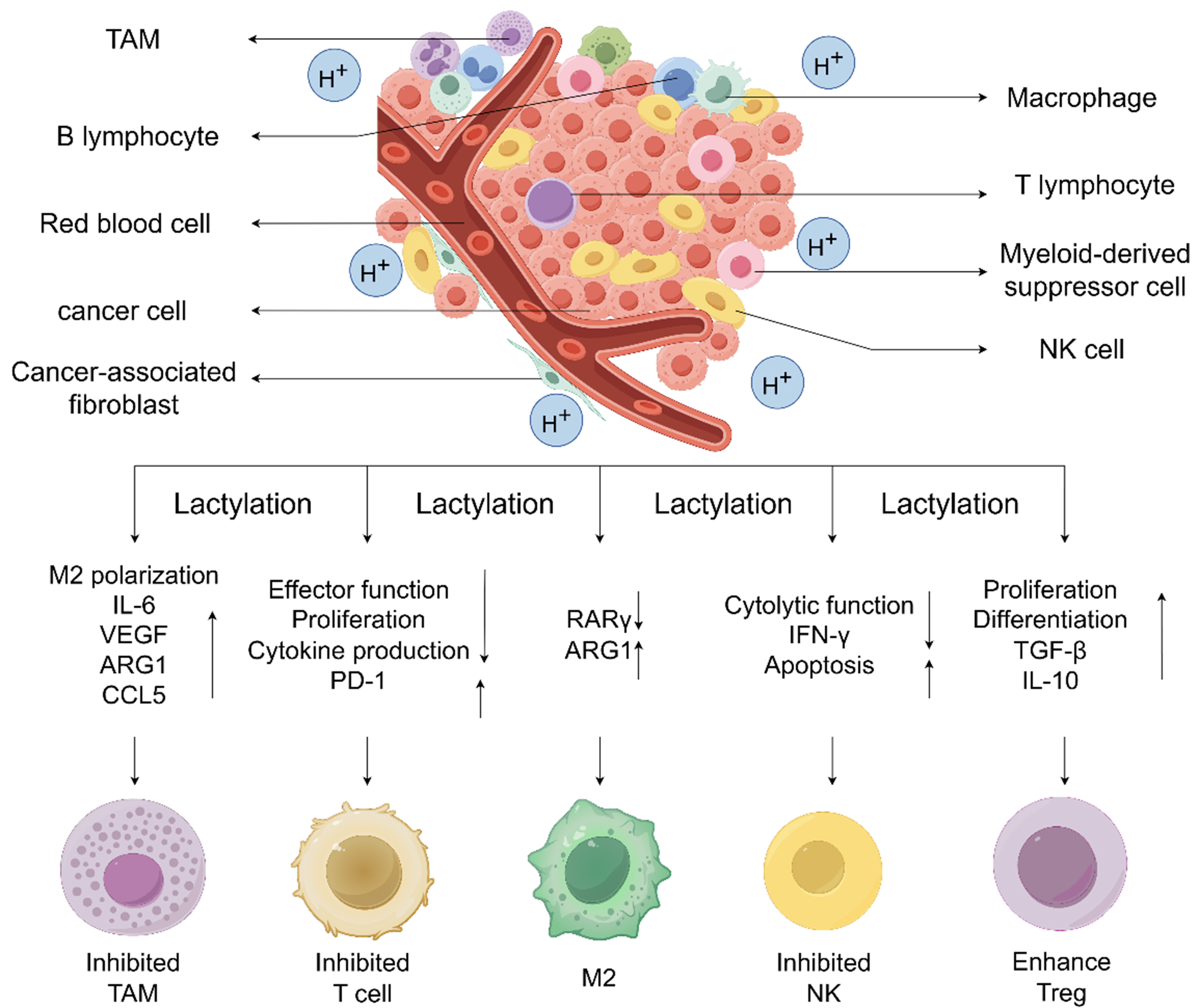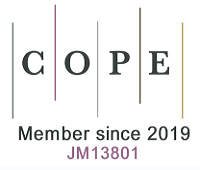fig3
Figure 3. In tumor cells, lactylation regulates the function of immune cells within the TME, contributing to immune evasion and tumor progression. Lactylation has been shown to suppress the cytotoxic and antitumor effects of IFN-γ by promoting apoptosis and impairing NK cell function. This diminishes the immune system’s ability to target and eliminate tumor cells. Furthermore, lactylation enhances the expression of the immune checkpoint molecule PD-1, resulting in the suppression of cytokine production, proliferation, and effector functions of T cells. This leads to the attenuation of T cell-mediated immune responses, thereby facilitating tumor growth. Lactylation also drives the polarization of TAMs from an antitumorigenic M1 phenotype to a pro-tumorigenic M2 phenotype. This is achieved through upregulation of ARG1 and downregulation of RARγ. Increased production of IL-6, VEGF, ARG1, and CCL5 further suppresses the phagocytic activity of TAMs, aiding tumor progression. In addition, lactylation enhances the proliferation and differentiation of Tregs by boosting the expression of TGF-β and IL-10. This strengthens the immunosuppressive function of Tregs, enabling tumor cells to evade immune surveillance and promoting tumorigenesis. IFN-γ: Interferon-gamma; RARγ: retinoic acid receptor gamma; PD-1: programmed cell death protein-1; IL-6: interleukin-6; VEGF: vascular endothelial growth factor; ARG1: arginase-1; CCL5: chemokine ligand 5; TGF-β: transforming growth factor-beta; IL-10: interleukin-10.












